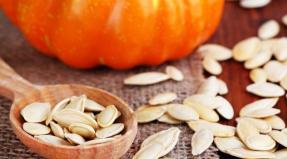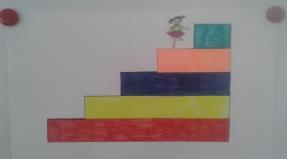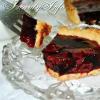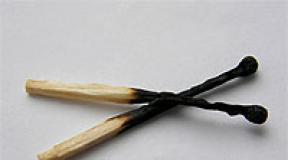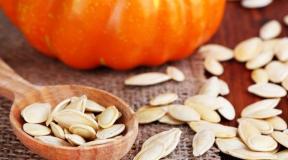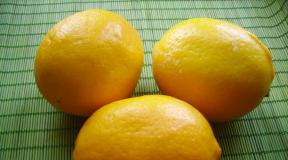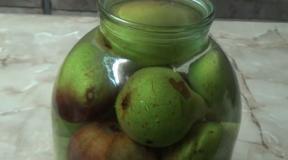What is water-based stain made from? Impregnation for wood: how to stain a wooden surface. Water stain and its specifics
Even in our time, when it would seem that you can buy anything, there are people who love to work with wood. Some craftsmen make interesting crafts, others are restoring old furniture. This creativity brings them joy and satisfaction, so many devote all their free time to it.
In the process of creating wooden crafts or furniture, giving finished product need colors. An ignorant person will be surprised: “What kind of problem is this? Go to the store, buy any paint or stain and work to your health!”
Everyone knows what paints are for. But few people use stains, so most people don’t know how they differ from paint compounds.
Stain is a composition used to tint wood and highlight its natural texture.
These substances do not form a film on the surface of a wooden product or structure; they are deeply absorbed into the material, changing its natural color. At the same time, the texture of the wood, which is its main decoration, remains visible, and sometimes even appears even better.
Indeed, the choice of means for giving wood the desired shade and protecting it from destructive influences is very large. The shelves are full of stains of various tones, made on different bases.
There are stains:

- aquatic;
- alcohol;
- oil;
- wax;
- acrylic.
But that’s why these people are called handicraftsmen, because they love to do everything. with my own hands, including wood stains. After all, somehow the people managed for many centuries without industrial chemicals. To this day, many recipes have been preserved that are still quite relevant today.
For the production of stains (stains), both the most accessible substances, available in almost every home, and chemical reagents that will need to be purchased are used.
Let's start with the simplest - products that are probably available in every kitchen.
Wood staining compositions made from coffee, tea and vinegar
Natural stains are good precisely because they are absolutely safe for human health– what bad things can happen from ordinary food products?
So, to give the wood a brown tint, you can do this:

- Brew the tea, let it brew, then strain out the tea leaves. The resulting composition can be impregnated with wood, saturating it with tannins (contained in tea). Depending on the amount of impregnation and the concentration of the brew, you can get many shades of brown.
- Ground coffee beans you need to brew, insist and strain. Treat the wood with the resulting infusion. The color will be darker than in the previous case, and it depends on the strength of the resulting drink.
- You can add a little soda to the ground coffee - in a ratio of 1:4 (1 part soda to 4 parts ground coffee) and brew it the same way.
Vinegar is useful for giving wood dark shade. True, you will need not only vinegar, but also small nails or iron filings (stock up if you know a metal turner).
The stain is done like this:
- Nails or shavings must be degreased and filled with vinegar.
- The container should be placed in a dark place and left for up to 7 days - depending on the desired color and concentration of stain.
- Then the wood is impregnated with stain. This process is called “ebonyization” - that is, giving the material a black tint. The method allows you to obtain various shades of black, but it is especially effective when used for staining species like walnut (with a high content of a substance such as tannin).
 The use of vinegar stain requires caution.
The use of vinegar stain requires caution.
Keep in mind that:
- It has a pungent odor, so you need to work either in a well-ventilated area or outside.
- Treated products should not be coated with polyurethane varnish - it will curl. It is better to use nitro varnishes.
Compositions from plant materials
These are also popular products that can be made from available raw materials. Moreover, depending on it, the tinting properties of the stain may be different.
For wood tinting:
- The onion skins need to be filled with water and boiled, preparing a thick decoction (this is also how eggs are painted for Easter). This decoction is used to treat wooden crafts and products for obtaining a reddish tint. It is used both as an independent product and as an additive to factory water stains. Brown.
- A reddish tint can be obtained by preparing a thick decoction of larch bark. Very beautiful colour obtained by processing birch wood with it.
- Brown tint can also be obtained different ways. For example, like this: pound nut shells dried in the shade in a mortar. The powder must be thoroughly boiled over a fire, filtered and a little soda added. Then you can impregnate the wooden product.

- It is possible to add other shades to wood that has already been treated with walnut stain. Reddish is obtained when an already dried part is moistened with a solution of potassium bichromate (chrompic), which is used for preparing dyes and tanning leather.
- If wooden part treat with diluted acetic acid, then the wood that is brown after walnut stain will take on a grayish tint.
- A mixture of oak and willow bark nut shell and alder catkins, taken in equal quantities, need to be poured with boiling water and boiled for a long time. Then add 0.5 teaspoon of regular soda to it and then put it on the fire for a while. After filtering, it is used to impregnate wood.
- A mixture of apple bark, willow bark and walnut shells is prepared in the same way as the previous one. It gives the products a brown tint, very close to natural.
- A composition prepared from a mixture of willow and alder bark paints the wood a rich black color.
- Hot cotton oil gives a noble dark shade to relief crafts. It tints the wood and gives it additional strength.
- Yellow can be obtained by preparing a decoction of unripe buckthorn fruits or barberry root. This option is only suitable for light-colored wood.

- Adding alum to the above decoctions allows you to enhance the color and make it more expressive.
- Orange color obtained by preparing a decoction of young poplar shoots (150 g) in 1 liter of water with the addition of alum. The broth is boiled for 60 minutes. Then the mixture must be filtered and left in the light for a week to settle. The field of this stain turns orange.
- A greenish color is obtained if a decoction of oak bark is added to the previous stain.
Chemical reagents for preparing stain
Potassium permanganate
The most famous remedy is potassium permanganate.
It allows you to tint wood in various colors - from dark brown to cherry.
To obtain a stain, you need to prepare a solution of 1 liter of warm water and 50 g of potassium permanganate. The product must be processed immediately after diluting the solution. It is applied to the surface, left for 5 minutes, and then wiped with a damp cloth. If necessary, the product can be reprocessed.
Birch veneer treated with a 3.5% solution of potassium permanganate acquires a golden brown color.
After the products have dried, they need to be varnished - otherwise the stain will quickly fade.
Slaked lime can be used without any additives:

- Oak wood soaked in slaked lime will turn light brown when dry.
- Walnut products will turn greenish-brown after this treatment.
Ammonia
With its help, wood is made darker. To prepare beytsa, use 88% ammonia and dilute with water. The solution has a very pungent odor. You will have to protect your vision, breathing and skin. It is better to carry out work on outdoors, and very quickly - since after an hour the mixture loses its properties. After the part acquires the desired color, its surface is washed with water.
If the product is small, you can place it in an enamel or glass container, put an open bottle of alcohol there and seal the container as tightly as possible. After a few hours, the part will acquire the desired shade.
verdigris powder
This is a pigment of artificial origin. 50 g of powder is dissolved in vinegar and then boiled for 10-15 minutes. This allows you to get green products. The wood is placed in a hot solution and kept until the tone of the desired intensity is obtained.
 Copper sulfate
Copper sulfate
Its aqueous solution gives oak a gray-blue tint. The same product can turn sycamore wood gray or dull it too much. bright tone mahogany. To get the effect you need to wait for the wood to dry.
Potassium chloride
Immersing light wood veneer in its solution (10 g of the substance per 1 liter of boiling water) produces a yellow color.
Aniline dyes
Their powder is highly soluble in water, turpentine and oil. This allows you to produce stains with various shades Brown color.
Hydrogen peroxide (25%)
Used to bleach wood. Moreover, different breeds react differently. For example, walnut wood becomes pinkish, and apple wood takes on an ivory color.
We have already seen that mixing herbal infusions with alum can affect the color of homemade stain.
Amazing herbal remedy is the juice of the fruits of wolfberries (popular name - privet), which when mixed with various reagents gives a different color.
In particular:

- when acids are added to the juice, a stain is obtained that turns wooden products black;
- mixing with vitriol allows you to tint the wood blue;
- adding Glauber's salt gives a scarlet color;
- mixing with potash - green.
Thus, making homemade stains is a simple process. But their use requires a serious approach, since it is possible to obtain the required shade of wood only experimentally. Therefore, first, try the stain on a small unnecessary piece of wood, let it dry - sometimes the effect does not appear immediately. If the color turns out to be shallow, process the board again, achieving the desired shade.
Stain (another name is stain) is a tinting composition designed to change the natural color and emphasize the natural texture of wood products. The impregnating composition penetrates deep into the wood structure - much deeper than varnish, enamel or paint can penetrate. You can buy stain at the store or make it yourself. DIY stain can be made according to the recipes given in this article.

Functions of stains
Finishes are used to process not only wooden surfaces, but also fiberboard, chipboard, MDF and plywood. Modern compositions, in addition to their main purpose, have disinfecting characteristics and prolong the life of wooden products. Solutions based on alkyds, oils and solvents avoid mold and repel harmful insects.

Sometimes stains are used to hide the real type of wood. Using stain, you can imitate an expensive type of wood (for example, oak) by painting ordinary pine with it. In addition, impregnation can accentuate the natural wood texture. If you use several stains correctly, you can combine a variety of shades into a single artistic design and turn a wooden product into a work of art.
The classification of stains is carried out according to the bases from which the solutions are made. Typically, stains are made using water, alcohol, oil, acrylic or wax. Below we will take a closer look at each of the listed basics.
Water based
Water-based stains are produced in two varieties:
- dry powder for mixing with water;
- ready-to-use aqueous solution.
The main disadvantage of water stains is the long drying period. Therefore, to obtain a uniform surface tone, it takes a lot of time.

When using aqueous compounds, the wood fiber rises. This emphasizes the structure of the material, but makes it less resistant to moisture. To avoid this effect, it is recommended to wet the surface of the wood before impregnation and then sand it well.
Alcohol base
Alcohol-based stains are solutions that include ethyl alcohol, organic dyes and pigments. Such compositions are used not only for decorative processing surfaces, but also as antiseptics. As a result of treatment with alcohol solutions, pile raising is reduced and wood swelling does not occur.

Alcohol stains do not allow you to obtain uniformly painted surfaces, since such impregnations dry quickly, which leads to the formation of stains. Thus, alcohol solutions are more applicable to small objects, while for painting large surfaces this is not the best option.
Alcohol stains are applied exclusively using spray bottles. Painting with a brush is not recommended, since it is difficult to achieve high-quality impregnation in this case.
Oil base
Oil-based impregnations allow you to obtain a wide variety of shades. Similar stains are produced based on dyes that dissolve well in oils and drying oils. The solvent element is white spirit.

Working with oil sealant is easy: it can be applied either with a brush or from a sprayer. Such stains do not lift wood fibers and spread evenly over the surface.
Acrylic base
Acrylic based stains - the last word in the development of tinting compositions. Thanks to acrylic, a thin colored film appears on the surface. She performs not only decorative, but also protective functions, limiting excessive moisture of the material. Acrylic compounds dry quickly, lack unpleasant odors, are safe and can be used to process any type of wood.

When treating the surface with acrylic paint, you should not get carried away with a large number of layers. As a rule, a couple of layers are enough. If you overdo it, wooden product stains will remain.
Wax base
Just like acrylic stains, wax impregnations form decorative and protective films. Typically, such compositions are used together with surface polishing. Wax stain is applied using a soft cloth.
Note! Wax stains should not be used if you plan to treat wood with two-component acid-curing varnishes or polyurethane paints.
Folk recipes for wood stain production
Making stain can be mastered at home. Compositions can be produced in several ways:
- from plant materials;
- from tea, coffee or vinegar;
- from chemical components.

You can also make a whitening composition. Let's look at the technologies for producing stains with our own hands in more detail below.
Vegetable stains
Below are recipes for plant-based beans:
- Larch bark decoction. Gives the tree a red tint. Birch wood will look especially beautiful.
- The onion peel also gives it a reddish hue. It is customary to treat light wood species with this decoction.
- You can get an impregnation from walnut shells that will give the wood a brown tint. To prepare the impregnation, you need to grind the shells into powder. The dried powder is boiled in water and filtered through a sieve. Next, soda is added to the solution. If you add potassium dichromate to the solution, wood will get a reddish tint. To obtain gray shade, acetic acid is applied to the already treated surface.
- Black coloring can be achieved by treating the tree with a decoction of oak and alder bark.
- Also due to the decoction of willow and alder bark.
- A uniform brown color is obtained thanks to a solution to which equal amounts of walnut shells, alder catkins, as well as oak and willow bark are added. The components are poured into water, which is brought to a boil. After this, half a teaspoon of soda is added and the solution is boiled for another 10 minutes.
- A decoction of nut shells and apple tree bark will give the product a brownish tint.
- The wood will acquire a golden hue after treatment with a decoction of buckthorn berries.

Compositions based on tea, coffee and vinegar
- To produce a stain that will give wood a brown color, you should mix ground coffee with soda.
- You can turn light wood brown by brewing tea. The depth of color depends on the strength of the brew.
- The “ebony” effect can be achieved by pouring acetic acid into a container with nails and letting the solution sit for a week in a dark place.

Chemical based formulations
- Oak wood will turn brown if you soak it in slaked lime. The walnut, in addition to its brown color, will acquire a slightly greenish tint.
- Cherry color can be imparted to wood by applying a manganese solution to it. To prepare it, you need to add 50 grams of potassium permanganate to a liter of warm water.
- A yellow color for light wood can be achieved by treating it with a decoction of barberry root. You need to add alum to the prepared broth, and then bring the liquid back to a boiling state.
- A greenish tone can be obtained by mixing 50 grams of copperhead with vinegar. Boil the solution for 15 minutes.
- If you mix wolfberries with vitriol, you get a brown tint. When these same berries are mixed with Glauber's salt, a scarlet color will appear. As a result of mixing wolfberry and soda, a blue tonality is obtained.

Whitening compounds
Bleaching impregnations are used as a preparatory measure before painting wood. Some types of wood get interesting shades as a result of bleaching. For example, a nut with its purple tint acquires a pale pink or scarlet color. Apple wood becomes ivory in color.

Recipes for whitening stains:
- Oxalic acid solution. For 100 grams of water, take 5 grams of acid. The solution is used to bleach light wood. On dark rocks, after treatment with this composition, stains of an unpleasant color will remain. After bleaching, the wood is washed in a solution where 3 grams of soda and 15 grams of lime are taken per 100 grams of water.
- Using a 25% hydrogen peroxide solution, you can bleach almost all types of wood, with the exception of oak and rosewood. Flushing in in this case need not.
Stain processing methods
Impregnation with stain is possible in several ways:
- Spraying with a spray gun. The method is good because it distributes the composition evenly over the surface.
- Rubbing with a cloth. The method is optimal for porous wood.
- Surface treatment with a roller. Used for application to small areas. When working with a roller, streaks do not occur, and the composition is distributed evenly.
- Application with a brush. This method is not applicable to all types of stains. However, when treated with a brush, wood receives particularly deep shades.

Below are tips that will help you achieve best results when treating wood with stain:
- The composition should be applied in the direction of the texture of the material.
- Beitz is applied in 2-3 layers.
- The first layer is to apply a very small amount of solution. You need to wait for the surface to dry. Then it must be sanded and the raised lint removed.
- The brush should not come into contact with areas that have already been treated.
- Wood polishing is carried out in the direction of the grain or obliquely.
- Large surfaces should be divided into sections and treated one at a time.
- A new layer can be applied only after the previous one has dried.
- Compositions based on water or solvent dry up to 3 hours, but oil-based ones - up to 3 days.
- Thick oil stains are diluted with paint thinners, and aqueous compounds are diluted with water.

Potential problems
If handled incorrectly, drips may occur. This happens when too much stain is applied to the surface. In such a situation, you need to remove as much excess stain as possible. To do this, you need to apply another layer of stain, and then use a rag to remove the excess layer of the compound. A solvent is used to remove dried impregnation. You can also use sandpaper or a plane.
Stains on wood may appear due to uneven density of the material. On some species (for example, walnut) stains do not spoil appearance, however, on coniferous wood or cherry, the spotting looks unattractive. Stains can only be removed with a plane. You can prevent the appearance of stains by using gel stains. Such compositions do not spread over the surface and are absorbed for a long time, so the formation of stains is unlikely.
0,00
 Staining can be superficial or deep. We will look at both options in detail. Deep staining of wood is called staining. The parts are treated with a mordant before gluing, dipping them into the solution or keeping them in it under pressure. After this, when the paint has drained from the part, they are dried. Turned elements are painted by dipping. The shade of paint or stain should be close to the natural colors of the wood, without any chemical color. For staining, as a rule, brown stain stain is used, but if it is not available, then you can use a dye intended for fabrics:
Staining can be superficial or deep. We will look at both options in detail. Deep staining of wood is called staining. The parts are treated with a mordant before gluing, dipping them into the solution or keeping them in it under pressure. After this, when the paint has drained from the part, they are dried. Turned elements are painted by dipping. The shade of paint or stain should be close to the natural colors of the wood, without any chemical color. For staining, as a rule, brown stain stain is used, but if it is not available, then you can use a dye intended for fabrics:
- yellow;
- red;
- black;
- blue.
By mixing them in different proportions through testing, you can select the desired color of the wood. You can also use ready-made alcohol stain, but for shades of light trees it is weak in shade, and in order to obtain dark tone it needs to be processed several times. After each time, another layer is applied to the dried surface. The depth of color is created by applying several layers of paint and rubbing the previous layer in between with a piece of foam rubber. After just one application, coloring usually does not give the desired result.
Products are painted black with nigrosin, which dissolves in water or alcohol, it all depends on the type of nigrosin. Alcohol paints dry faster than water paints. Using staining, you can imitate cheap common species to look like more expensive, valuable wood. For example, beech or alder - under mahogany, hornbeam - under ebony, birch - walnut, maple and so on.

To stain mahogany, mix solutions of red acid, brown acid and nigrosin in equal quantities. Or dissolve 10 grams of orange acid, 3 grams of blue acid and 1 gram of soda ash in 1 liter of hot water. 30 grams of Epsom salt solution and 30 grams of potassium permanganate dissolved in 1 liter of water are used to paint birch walnut, first paint everywhere, and then apply stripes and veins with a thin brush. While looking at a natural sample.
By touching up in some places, you can even out the contrasting difference in tone (for example, when moving to sapwood from the core). This is necessary when finishing glued panels from plots of different tones. Wood, which contains tannins, is stained well with a solution of chromium, which is very easy to prepare. To do this, chromium is poured into 1/6 of the height of the bottle (potassium dichromate) - an orange-colored powder, which is a fairly strong oxidizing agent, is poured hot water and shaken thoroughly to ensure maximum dissolution. Mahogany and oak can be painted almost black in just a few uses using chrome.

Before starting the staining procedure, the surface must be slightly moistened with a sponge. The stain is applied in fairly broad strokes along the fibers using a wide cloth swab. The diameter of the tampon should be:
- not less than 6.0 cm;
- soft;
- not loose;
- tied securely so that its tail is comfortable to hold in your hands.
Fill the tampon with cotton wool or something even better, such as wool, and wrap it in new cotton or linen cloth. It is not recommended to use synthetics. A tampon, moistened and soaked in stain, is pressed against the edge of the vessel. It is not recommended to apply paint with a brush, because it quickly transfers it to the surface, on which stains and drips will remain. If you grab the surface with your hands, you should wipe it with gasoline (for example, used for refilling lighters) or acetone.

Stained wood is wood that has lain in water for many years, resulting in incredible beauty and strength.
Everyone knows that there are valuable tree species, and there are more affordable ones, such as pine or spruce. But there is a completely special category of wood - stained. This is a tree that, after lying in water for tens, hundreds, thousands of years, acquires incredible beauty and strength. Let's talk about stained wood.
Stained wood - incredible beauty and strength
Tree trunks and fragments lying under water are usually called driftwood. A logical name, considering that the tree actually ends up drowned and has been at the bottom of the sea, lake, river, or swamp for decades. It is noteworthy that some trunks turn into dust, rot and, of course, cannot be used. But other trees, on the contrary, acquire truly stone strength.
The most valuable stained wood is oak. This royal tree is already valued for its strength and beautiful texture. After lying under water for at least 300 years, oak acquires delicate fawn shades. If the tree is black, then it has lain in the reservoir for about 1000 years!
In the pre-industrial era, “black gold” was not called oil at all, but bog oak. Products made from it are practically eternal and are not subject to rotting, mildew or mildew. They do not need protective covering, and stained wood also looks extraordinarily beautiful.
Besides oak, larch is considered the most valuable stained wood. No wonder. It is these tree species that are due to high density drown, sink to the bottom, where a transformation process occurs under a layer of silt or sand. Even in fresh water There are salts that interact with the tannins of wood and help it acquire special hardness and strength.
According to experts, for a tree to really become stained, it must lie under water for at least 40 years. In general, the longer the better, experts say. Ideal places to obtain stained wood are standing waters of swamps or lakes. But a tree that has lain in sea water, soaked in salt, will also be no less durable.

You can make literally anything from stained wood: furniture, parquet, various crafts, figurines and figurines, boxes, billiard cues, pipes, other interior items and even jewelry. This material has no disadvantages, but it is not accessible to everyone. Stained wood, especially oak and larch, is very expensive! There are several good reasons for this:
- Firstly, this is a rare material. Although, as calculated by the Central Research Institute of Lesoslava, during the transportation of tree trunks, approximately 1% of the total floated volume drowns, and about 9 million m3 of driftwood has accumulated in the Volga basin. That's a lot, you say. But finding sunken trunks is not easy. In addition, only 50% of all sunken wood can be classified as commercial, that is, suitable for further use. And there is no more than 5% oak among the driftwood. In Europe, the search for and lifting of flooded trees has been carried out for a long time and purposefully, so it is already very difficult to find driftwood in European countries. Russia still has reserves of this material;
- Secondly, lifting a tree to the surface is technically difficult. Special equipment is needed, usually requiring the help of scuba divers. The wood becomes heavy; you cannot get a whole trunk by hand;
- Thirdly, it’s not enough to get some driftwood. It also needs to be dried before use. This takes about a year, and in no case should you speed up the process; drying should occur naturally;
- Fourthly, it is difficult to process wood that has become very durable; special skills and tools are needed. Not all carpenters undertake to work with bog oak.
Therefore, for three kilograms of bog black oak on the Internet they often ask for about 2 thousand rubles! Or 200 rubles for one piece small size, literally a cube suitable only for cutting out, for example, the handle of a knife. And the finished comb from bog oak, such as shown in the photo above, will cost more than 12 thousand rubles.
Can you imagine how much a parquet made from such material will cost? kitchen set. Experts compare the cost of a good stained oak log with the price of a car. Cheaper are stained birch, pine, and aspen - they charge from 1.5 to 20 thousand rubles per cubic meter, depending on the condition and quality of the wood.
With such prices for stained wood, it is not surprising that manufacturers of furniture and interior items achieve similarity with the help of stains and special impregnations. Yes, this is an imitation; in terms of strength and hardness, such wood is no different from ordinary wood, but the color becomes darker, more noble, and the structure is emphasized.
Stained wood is an elite material. Only for expensive interiors, decoration of yachts, interiors of exclusive cars, furniture that stands in the offices of presidents and executives of large companies.published
Subscribe to our Yandex Zen channel!
If you have any questions on this topic, ask them to the experts and readers of our project.
DIY stain:) Research by Yulia Zhushman
Hello again!I'm here with another article. Since journalism is a related activity to me, when I become interested in a topic, I begin to dig into what and how, so it turns out that sometimes theory outweighs practice for me. I became interested in the topic of staining (I see from the site that many of you are also interested in it), and discovered a huge number of ways to do this without industrial stain. The staining process itself has been described many times, but the materials have been described less frequently. Having spent time on furniture makers forums (although Google persistently suggested entomologists) - I chose information that was more or less verified, excluding recipes like: “...take a fern flower, add an owl feather, a claw bat and the eye of the dragon." Although, to be honest, some of the methods left still remind me of this

So, many of the methods are quite interesting - I’ll make a reservation: I haven’t tested it myself yet, but I really want to. And, knowing what experimental spirit is in the air here, I think it will interest you too. It’s interesting to try simply because you’re curious, and not because you can’t just buy something ready-made. Moreover, all the recipes are not “strict”; you can add everything yourself that seems suitable - no one will beat you for it. Here. Long introduction to a long article. On Alice’s advice, I’m breaking it into two parts - the first will be accessible to almost everyone, and the second will be more challenging in terms of materials.
Before starting the “experiments”, I remind you that the color of the stain should NOT match real color material that needs to be wasted! The stain should be darker (the color should be concentrated) of the material. So:
1. “There will be coffee for you, and there will be poop and tea!”
Completely unexpected shades color combinations are obtained in a decoction of ground coffee beans, sometimes with the addition of baking soda. Used and strong instant coffee. In this method, we calculate the required strength ourselves.
2. “- Well, what, kids? Are we going to teach botany or will someone treat the teacher to a herbarium?”

If you boil larch bark in a strong solution and cover the tree (preferably birch), shade it turns out reddish.
To give wood Brown Dry the slightly rotten nut shells in the shade and then grind them into powder in a mortar. To make stain from powder, you need to boil it in boiling water, filter the broth and throw in a little potassium carbonate or simply soda. If wood treated with walnut stain after it dries is moistened with an aqueous solution of potassium dichromate, then the wood will become reddish. And if you treat it with dilute acetic acid, then the same brown wood will become - grayish.
Making a stain that gives reddish tint light wood of a tree, possibly from onion peels. Prepare a very strong decoction onion peel and use it alone or as an additive to brown stains.
Take crushed oak and willow bark, alder catkins and walnut shells in equal parts. Pour into cold water, bring to a boil, add half a teaspoon of baking soda and boil the solution a little more over low heat. Strain. Also good color is achieved by similar preparation of a solution from the bark of willow, apple tree and walnut shells. With subsequent tinting, the product acquires smooth brown color, identical to natural.
Saturated black color can be obtained by using a solution of willow and alder bark.
Relief forms can be impregnated with hot cotton oil, which makes the carving stronger and the relief acquires a noble appearance. dark color, which after coating the product with varnish, its polishing becomes more intense.
Light wood can be painted yellow a decoction of unripe buckthorn fruits, in brown- from apple bark and walnut shells. If you add alum to each of the listed decoctions, the color tone will intensify.
3. National Russian drink - vinegar for free!
Fat-free small nails or iron filings are poured with acetic acid and the composition is allowed to brew from a day to a week (depending on the desired saturation) in dark place. The product is coated with this composition. True, it has a strong pungent odor and it is better to cover wood with it. fresh air. Americans call this recipe ebonyization(ebony), because on rocks with a high tannin content, such as walnut, a well-defined black color, sometimes almost like anthracite. True, some furniture makers note that polyurethane varnish on water based Such wood simply curls up when applied, apparently due to vinegar. But nitra is normal.
4. “- Please give me a pack of chlorpromazine. “We can’t sell it to you: it’s a very strong sedative, it’s sold only with a doctor’s prescription.” “Okay, then give me a box of potassium permanganate - I’d rather blow these Martians to hell.”
Dilute 50 grams of potassium permanganate (potassium permanganate) in a liter of warm water, and then apply it to the wood with a brush and wipe off after 5 minutes damp cloth. This stain should be used immediately after preparation. If necessary, repeat the wood treatment. Shades are obtained from cherry before dark brown, almost black. Golden brown The color of birch veneer can be obtained by using a 3.5% solution of potassium permanganate. If you then do not protect the tree with anything, the potassium permanganate will fade
5. School chemistry course: “Do you have blue in your store? -Eat. - What colour?"

Moisten the surface of the wood with a solution of 35 g of potassium carbonate or 75 g of soda ash per liter of water, and then after drying, moisten it with a mixture of 50 grams of tannin (can be bought at a pharmacy) per liter of water. Do not rush to repeat staining wood with stain - its color only appears after an hour...
If wood with a high tannin content (oak) is moistened with slaked lime, then after drying it will become light brown. But the nut will be colored greenish-brown color.
In order to make oak more dark, use 88% ammonia diluted in water. Avoid inhaling vapors and do not allow liquid to come into contact with bare skin. Whenever possible, work outdoors. After an hour in the open air, the mixture loses its strength, so apply the stain very quickly or gradually mix new portions, and when the wood takes the color you want, rinse the solution with water. Place the small part to be painted in an enamel or glass container and place an open jar of ammonia. Close the top of the dish tightly. In a few hours the staining process will be completed.
Sliced veneer made from light wood can be painted in yellow using a decoction of barberry root (can be bought at a pharmacy). Strain the broth, you can add 2% alum to it (also at the pharmacy) and heat it again to a boil. The cooled broth will be ready for use.
. Orange color obtained by using a decoction of young poplar shoots mixed with alum. Boil poplar branches (150 g) in 1 liter of water to which alum has been added for 1 hour. Then filter and leave to settle in an open glass container. Stand up for it in bright room in a week. After this he acquires golden yellow color.
For getting greenish color add the decoction to the decoction of young poplar shoots with alum (see above) oak bark. A greenish color will be obtained if fine verdigris powder (50...60 g) is dissolved in vinegar and the solution is boiled for 10...15 minutes. Soak sliced veneer in a hot solution.
For getting black color Mix the juice of privet fruits (wolf berries) with acids. For brown- with vitriol, blue- with baking soda, scarlet- with Glauber's salt, green- with potash.
In some cases it is necessary to select silver or gray coloring of sliced veneer. To obtain a silver-gray color when mordant dyeing light-colored rocks, rainwater(? - I think you can use regular one) add vinegar (1:1), place rusty nails or wire in this solution. After the solution has settled, lower the veneer into it. Check the desired color visually.
Here, some methods require, of course, the presence of familiar chemists, but for the sake of interest I am publishing them too - what if someone just happens to have copper sulfate lying around at home, and he is racking his brain: where to use it?
6. “- Vasya, put your hand in this glass. - I dropped it. - Do you feel anything? - No. - Means sulfuric acid in another glass." 
Wet wood with a high tannin concentration (available at pharmacies) with a 12% ammonia solution and it will become grey-brown color.
Using an aqueous solution copper sulfate can be given gray-blue oak shade, mute the tone of mahogany or make sycamore gray - this tone is also called “maple”. The effect will begin to appear after the wood dries.
. Yellow receives veneer from light wood in a solution of potassium chloride (10 g per 1 liter of water at 100 ° C).
If you coat birch or maple with a solution of pyrogallic acid and, after allowing to dry, cover it with an aqueous solution of chromic potassium, you will get Blue colour.
You can also use many different acids and their mixtures, but for everyone's safety it is better not to publish - who knows how far the curiosity of some and how deep their knowledge of chemistry is?
7. “During a drawing lesson, the teacher mixed blue and yellow paints, and it turned out green. The children decided that she was a witch and burned her.”
Various shades of brown can also be obtained using aniline dyes. These paints can be bought in powder - it easily dissolves in water, as well as in turpentine and oil. For a dark stain, mix two aniline dyes - Vandyck brown and Bismarck brown. Dilute in warm water each paint separately. Add 7 ml of glue and a drop of vinegar to both solutions. Mix paints with each other to achieve the shade you want; the more water you add, the lighter the stain will be.
You can take dyes for clothes. Yellow, red, and brown. Dilute in water in approximately 100-150 ml. Each sachet is in a separate bottle. And now you can mix any stain from these colors.
8. Whitening: then we are coming to you!
With the help of bleaching, you can not only prepare wood for painting, but also achieve expressiveness of tone, weakening it to the required level. When bleached, some types of wood sometimes acquire the most unexpected color shades So, Walnut, which has a uniform surface texture with a purple tint, when bleached in hydrogen peroxide, it becomes pure scarlet pink shade, with further bleaching - pale pink.
If you bleach an apple tree in a mixture of ammonia and hydrogen peroxide, it turns out very beautiful tree ivory. The whitening is quite deep, up to 0.5 mm, and can be polished.
Various solutions are used for bleaching. Some of them act quickly, others slowly. The bleaching technology depends on the composition of the bleach. In the practice of amateur carpenters, a solution of oxalic acid (1.5...6 g) is traditionally used in boiled water(100 g). This solution bleaches light woods well - linden, birch, maple, light walnut, white poplar; other breeds develop gray spots and muddy shades. After bleaching, the veneer sheets are washed with a solution that simultaneously lifts the pile and deresinates the surface. Composition of the solution (in parts by weight): bleach - 15, soda ash - 3, hot water- 100. First, dissolve the soda, then add bleach after the solution has cooled. After using the solution, the wood is washed with water.
For many species, with the exception of oak, rosewood, lemon tree and some others, an effective bleaching agent is hydrogen peroxide (25% solution), which is sold in pharmacies in the form of a solution or perhydrol tablets. After bleaching with hydrogen peroxide, the wood does not need to be washed. The bleaching process is controlled only visually. Hydrogen peroxide bleaches mainly fine-pored wood and ash. Species containing tannins are difficult to bleach in hydrogen peroxide or cannot be bleached at all (for example, oak). To speed up the bleaching process, the surface of such rocks must be moistened with a 10% solution of ammonia.
Birch wood after bleaching in a 3...5% solution of oxalic acid acquires greenish tint. Oak and ash veneers are bleached oxalic acid. For other types of wood, use citric or acetic acid. To do this, acids are diluted with water in a ratio of 50 g per 1 liter of water. To obtain gold veneer, soak Anatolian walnut in hydrogen peroxide, visually observing the appearance of the desired shade. Hydrogen peroxide must be at least 15% concentration. In the same way you can get pink color , bleaching some varieties of walnuts in hydrogen peroxide at a concentration of 30%. To obtain blue on a white background, bleach walnuts with contrasting tones in a hydrogen peroxide solution.
That's it, congratulations to everyone who made it to the end alive! 
